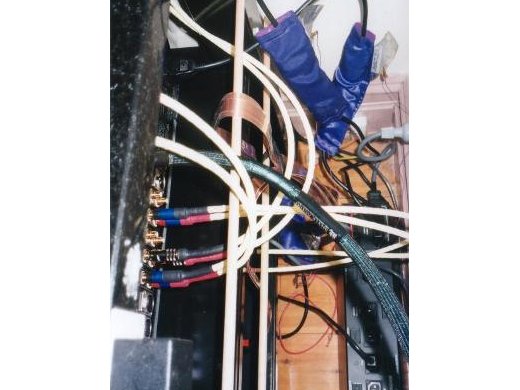MIT invents 'wireless electricity'
Wireless power transfers for notebooks, mobile phones coming

Wouldn't it be great if you could get rid of trailing cables for charging your various gadgets? It may soon be a reality, thanks to a team of researchers at MIT .
Its vision of the future is one where you can wirelessly transfer power, which is potentially useful for charging portable devices, such as notebooks, digital media players and mobile phones, without the need for power cords. Some devices may not even need their bulky batteries to operate.
The team from MIT's Department of Physics, Department of Electrical Engineering and Computer Science, and Institute for Soldier Nanotechnologies (ISN) demonstrated the ' WiTricity ' (as in wireless electricity) technology at the University yesterday.
The team was able to light a 60W light bulb from a power source some two metres away. There was no physical connection between the source and the appliance.
Awakening
The work on developing WiTricity began when one of the researchers was woken for the umpteenth time by his mobile phone beeping, reminding him to recharge it.
"It was probably the sixth time that month that I was awakened by my mobile phone beeping to let me know that I had forgotten to charge it. It occurred to me that it would be so great if the thing took care of its own charging," said professor Marin Soljacic.
To make this possible, a way to transmit power wirelessly had to be developed, so Soljacic started thinking about which physical phenomena could help make this wish a reality. Electromagnetic radiation, such as radio waves, is not usable for power transmission as it spreads in different directions.
Get daily insight, inspiration and deals in your inbox
Sign up for breaking news, reviews, opinion, top tech deals, and more.
Instead, WiTricity is based on using coupled resonant objects sharing the same frequency. Two objects with the same resonant frequency exchange energy efficiently, while interacting weakly with extraneous off-resonant objects. A child on a swing is a good example of this. A swing is a type of mechanical resonance, so only when the child pumps its legs at the natural frequency of the swing is it able to impart substantial energy.
Power transfer
The MIT team used magnetically coupled resonators and were able to transfer power efficiently using this way.
Magnetic coupling is particularly suitable for everyday applications because most common materials interact only very weakly with magnetic fields. "The fact that magnetic fields interact so weakly with biological organisms is important for safety considerations," Andre Kurs, a graduate student in physics, pointed out.
The WiTricity technology could be used to reduce our dependence on batteries. The team said a notebook would charge automatically, without having to be plugged in, or even use the battery.
"In the past, there was no great demand for [the WiTricity] system, so people did not have a strong motivation to look into it. Over the past several years, portable electronic devices, such as notebooks, mobile phones, and iPods have become widespread, all of which require batteries that need to be recharged often," said professor John Joannopoulos.
"Hopefully, we will be getting rid of wires, and also batteries, soon," he added.